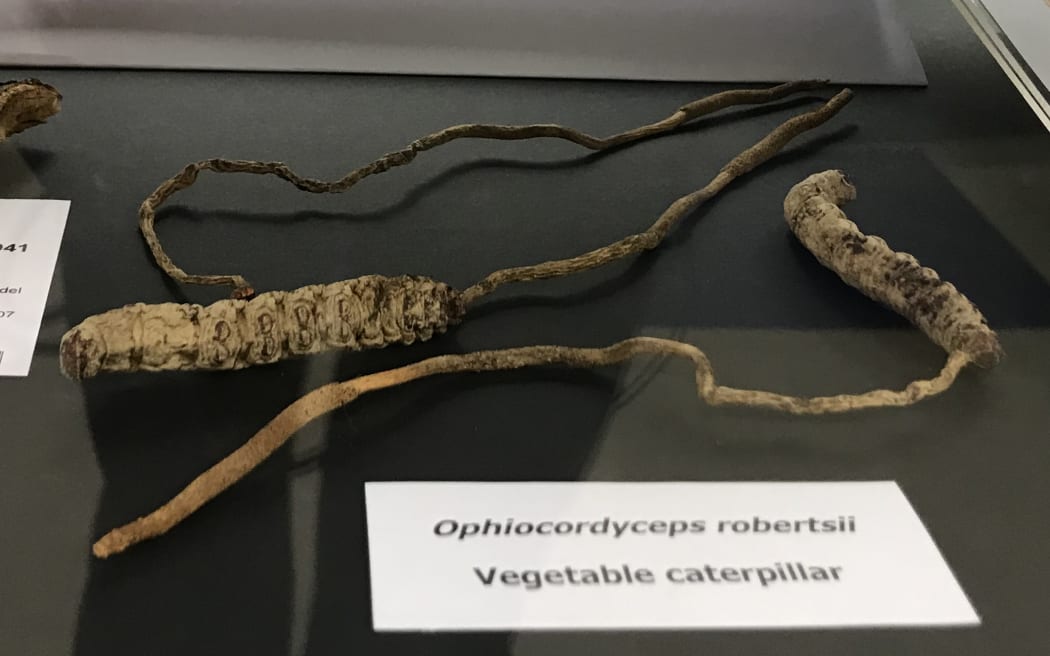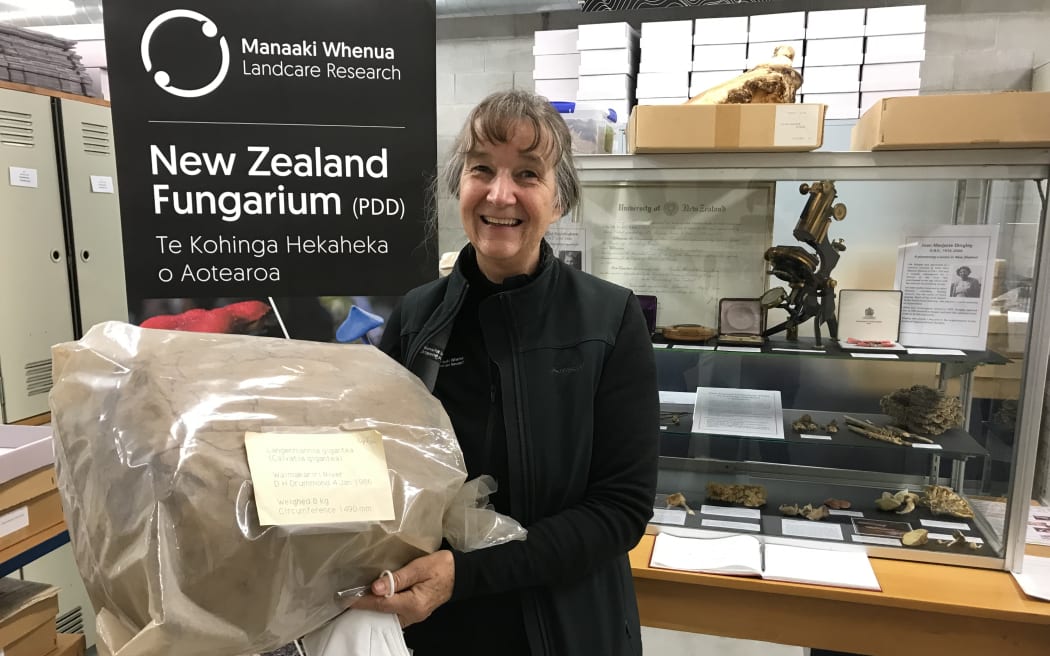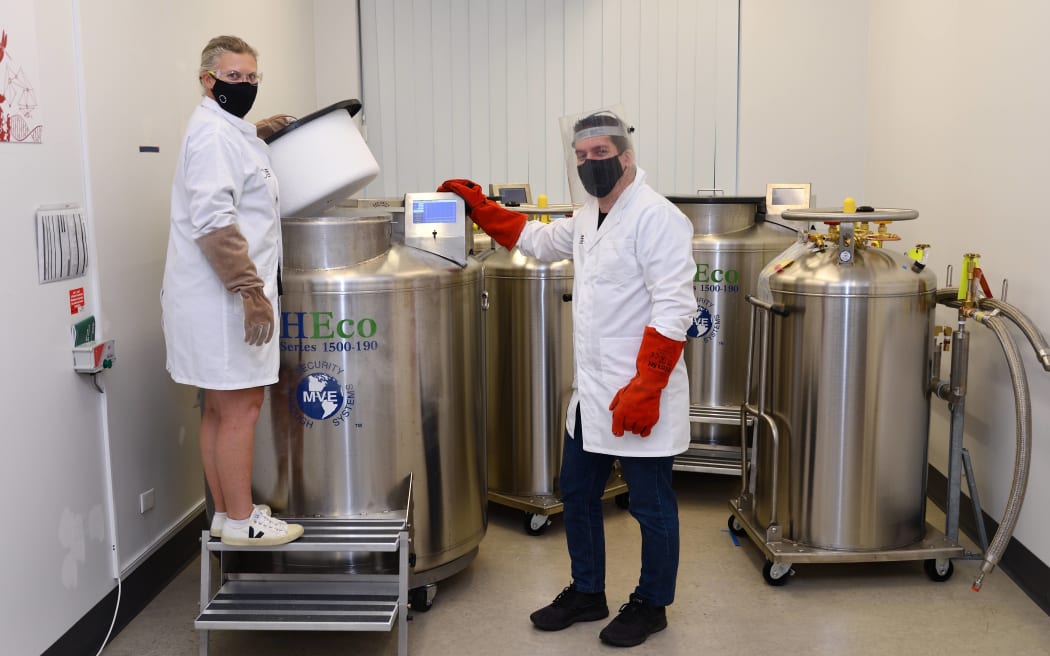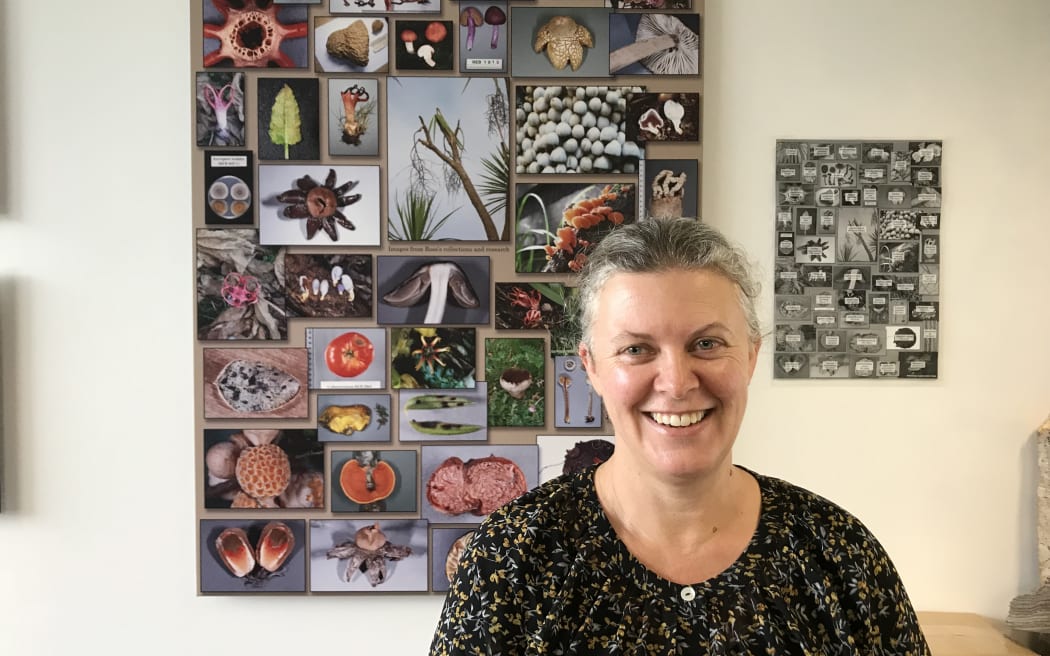The New Zealand Fungarium has a library feel – a quiet and calm room, with just the hum of air conditioning as a backing track. On display in a glass fronted cabinet is a small group of mummified caterpillars on a stick, like weird larval lollipops.

Vegetable caterpillar fungi Photo: RNZ
Follow Our Changing World on Apple Podcasts, Spotify, Stitcher, iHeartRADIO, Google Podcasts, RadioPublic or wherever you listen to your podcasts.
Ingesting a spore of a particular native fungus causes the caterpillar to change its behaviour, explains Dr Mahajabeen Padamsee, curator of the New Zealand Fungarium. "It goes and buries itself with its head pointing up, and the fungus grows from the top of the head," she says.
These ‘vegetable caterpillars’ are part of more than 100,000 specimens that make up this collection, a store of dried fungi housed in the Manaaki Whenua – Landcare Research building in the suburb of St Johns in Auckland.
A large climate-controlled room hosts row upon row of shelves, stacked with large cardboard boxes, themselves filled with envelopes containing dried fungi wrapped in tissue. Some of the specimens are just too large for envelopes, and rest instead in larger boxes or are wrapped in plastic bags to trap their spores.

Adrienne Stanton holds a large puff ball, it weighted 8kg when collected. Photo: RNZ
Adrienne Stanton, the collection manager, is responsible for keeping the specimens safe and in good condition, as well as facilitating specimen loans to researchers. Alongside a huge number of native New Zealand fungi, the collection also contains many specimens from across the Pacific.
The New Zealand Fungarium is used for two main functions – investigating fungal biodiversity and helping biosecurity efforts. It grows each year by about 2,000 specimens. Some are given to the collection by researchers, but many are gathered during the annual Fungal Foray – a multi-day fungi treasure hunt, held in a new area each year with the Fungal Network of New Zealand.
An important part of the collection consists of ‘type’ specimens – individual specimens chosen to serve as exemplars, the physical basis for naming and describing a species.

Megan Petterson and Bevan Weir in the ICMP Photo: RNZ
Down the corridor from the Fungarium, there's a restricted access room filled with large, stainless-steel tanks.
“Inside this room we now have every single bacterial plant pathogen that’s ever been described in the world,” says Dr Bevan Weir, the curator of this culture collection, the International Collection of Micro-organisms from Plants (ICMP).
It’s a collection of about 24,000 living cultures of bacteria, fungi and chromists (genetically distinct from bacteria and fungi, chromists are most closely related to brown algae). Researchers deposit new specimens with the collection, or request them for study, and it also contains type specimens.

Megan Petterson Photo: RNZ
The cultures are in plastic straws inside boxes and kept frozen by use of liquid nitrogen, all under the careful watch of Megan Petterson, the collection manager.
The ICMP is revealing the hidden bacterial biodiversity of our native plants, but it also has an important role to play in many of New Zealand’s responses to biosecurity threats, including kiwifruit PSA.
Listen to the full episode to learn more about the New Zealand Fungarium and the ICMP.
To learn more:
-
Listen to the Alison Ballance retrospective 5: kauri dieback disease to learn about the chromist threatening kauri.
-
In 2017 the Prime Minister’s Science Prize went to a team of researchers from Plant and Food Research for their work on helping solve the kiwifruit PSA crisis. Listen to Science to solve kiwifruit crises a winner.
-
Our Changing World tagged along on the 23rd Fungal Foray in 2009.


